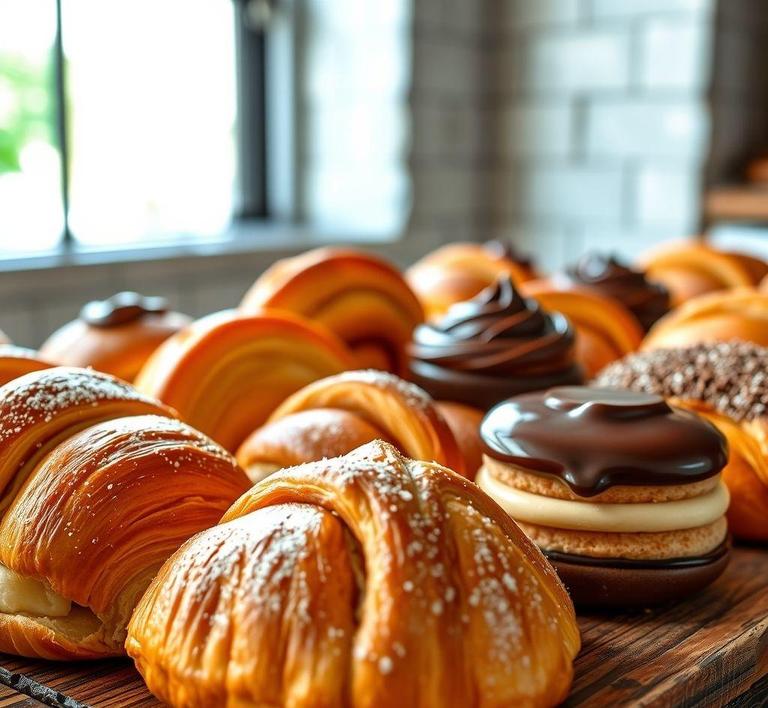If you’ve ever found yourself with leftover pastries, you might be wondering whether it’s possible to refreeze them without compromising their taste and texture. Well, the good news is that, yes, you can refreeze pastries! However, there are a few important steps and tips to keep in mind to ensure they stay fresh and delicious. From choosing the right pastries to storing them properly and understanding when refreezing might affect their quality, this guide will walk you through everything you need to know about how to refreeze pastries without sacrificing flavor or flakiness. Let’s dive in!
Can You Refreeze Pastries?

The short answer: Yes, you can refreeze pastries, but whether you should depends on several factors-most notably, how the pastries were initially thawed, the type of pastry, and your expectations for texture and flavor after refreezing.
Pastries are delicate creations. Many are made with layers of butter-rich dough, such as puff pastry, croissants, and Danish pastries. These items rely on a careful balance of temperature, moisture, and air for their iconic flaky, crisp texture. Refreezing can disrupt that balance.
If your pastries were thawed in the refrigerator and kept cold (below 40°F or 4°C) the entire time, then it’s generally safe to refreeze them. However, if they were left at room temperature for more than two hours or were reheated, refreezing can pose a food safety risk and is not recommended.
How To Refreeze Pastries?
If you decide to refreeze pastries, here’s a step-by-step guide to help preserve as much quality and flavor as possible:
-
Assess Freshness and Temperature:
- Only refreeze pastries that have been thawed in the fridge and haven’t sat out at room temperature.
- Check for signs of spoilage-off smells, excessive moisture, or mold.
-
Cool Thoroughly (If Recently Baked or Heated):
- If the pastry was baked before freezing, allow it to cool completely. Freezing while warm can create condensation, which leads to ice crystals and soggy textures upon reheating.
-
Wrap and Protect:
- Use airtight packaging. Wrap individual pastries tightly in plastic wrap or aluminum foil.
- For added protection, place the wrapped pastries in a freezer-safe zip-top bag or container. Squeeze out as much air as possible to prevent freezer burn.
-
Label and Date:
- Mark each package with the type of pastry and the date of refreezing. Most pastries should be consumed within 1-2 months after refreezing for best quality.
-
Freeze Quickly:
- Place pastries in the coldest part of the freezer to encourage rapid freezing. The faster the freeze, the smaller the ice crystals-and the better the texture after reheating.
Quality Impact
Here’s where things get interesting. Refreezing can be done safely, but the real question is: what will your pastries taste and feel like afterward?
-
Texture Degradation:
- The number one casualty in refreezing is the texture. Flaky pastries-like croissants, puff pastry tarts, and turnovers-may become denser and soggier with each freeze-thaw cycle.
- The butter layers that create a crisp, airy structure can lose their definition. Ice crystals formed during freezing can rupture gluten structures and cause water release during thawing.
-
Flavor Dulling:
- While most flavors remain intact, some more delicate pastries, particularly those with fresh fruit fillings or creamy custards, may taste slightly muted or “flat” after being refrozen.
- Spices and aromatic ingredients may lose potency as the moisture redistribution in the pastry dilutes their effect.
-
Appearance:
- Frosting, glazes, and powdered sugar tend to break down when refrozen and thawed. What was once glossy and inviting may turn dull or runny.
- Decorative elements like fruit or whipped cream toppers rarely survive a second freeze with elegance.
Refreezing pastries is a balancing act between convenience and quality. While it’s entirely possible and often safe to refreeze pastries that have been properly handled, the resulting product may not be quite as delightful as it was originally. Textural changes-especially in flaky, buttery baked goods-are the most noticeable, with potential flavor compromises following close behind.
To minimize disappointment, consider refreezing only those pastries that are meant to be reheated (like croissants or sausage rolls), rather than delicately decorated ones or those with cream fillings. Whenever possible, freeze pastries in portioned amounts initially so you can avoid the need to refreeze altogether.
Is It Safe To Refreeze Pastries?
In most cases, yes-it is technically safe to refreeze pastries, but with caveats. The safety of refreezing largely hinges on how the pastry was initially handled after thawing. If the pastry has remained at a safe temperature (below 40°F/4°C) and hasn’t sat out for more than two hours at room temperature, refreezing it is generally safe from a microbiological standpoint.
However, food safety isn’t the only concern; food quality takes a hit when pastries are refrozen. Pastries-especially those made with laminated dough, such as croissants, puff pastry, or Danish-are known for their flaky, delicate layers. The freezing and thawing cycle breaks down the structure of the butter layers, leading to soggy bottoms, tough crusts, and diminished flavor upon re-baking. Cream-filled or custard-based pastries are even trickier, as the water content can separate and cause weeping or spoilage.
Signs That Pastries Should Not Be Refrozen
Before reaching for the freezer door, it’s important to assess your pastries. Several signs can indicate that a thawed pastry has passed the point of safe or sensible refreezing:
-
Visible Mold or Discoloration:
If there are green, blue, or black patches, do not refreeze-dispose of the pastry immediately.
-
Unpleasant Odor:
A sour or off smell indicates bacterial or yeast growth. This is a red flag that the pastry has begun to spoil.
-
Excess Moisture or Sliminess:
If the pastry feels excessively wet, gooey, or slick, it may have begun to break down structurally due to bacterial activity. This typically happens with pastries that contain cream, cheese, or eggs.
-
Been Left Out Too Long:
If your pastries sat at room temperature for more than two hours (or one hour in hot environments), they are in the "danger zone" for bacterial growth and should not be refrozen.
Common Refreezing Mistakes
Refreezing pastries isn’t a straightforward process, and it’s easy to fall into some common pitfalls:
❌ Refreezing After Full Thawing:
Once fully thawed, especially at room temperature, the internal moisture and butter content can destabilize the pastry’s texture. Instead of letting it thaw completely, consider refreezing only if it’s partially thawed and has remained cold.
❌ Refreezing Pastries with Fresh Cream or Custard:
Pastries like éclairs, cream puffs, or custard tarts contain high-moisture fillings that do not survive freezing well. The result is often grainy, separated, or even curdled textures post-thaw.
❌ Using the Wrong Packaging:
Storing pastries loosely wrapped or in containers prone to air exposure leads to freezer burn. This not only affects taste and texture but can also encourage off odors and discoloration.
❌ Not Labeling and Dating:
Without proper labeling, it’s easy to forget how long a pastry has been in the freezer. A good rule of thumb is to consume refrozen pastries within 1 month to minimize quality loss.
Tips And Tricks
If you must refreeze pastries, consider these best practices to preserve their quality and safety:
-
Portion Before Freezing:
Divide pastries into individual servings before freezing. This way, you only defrost what you need, reducing the likelihood of multiple thaw-refreeze cycles.
-
Use Proper Storage:
Wrap each pastry in parchment paper or plastic wrap, then seal it in an airtight freezer-safe bag or container. Removing as much air as possible reduces freezer burn and moisture loss.
-
Freeze Fast, Thaw Slow:
Rapid freezing (in a cold, pre-chilled freezer) helps preserve the structure. When it’s time to thaw, do so in the refrigerator overnight rather than at room temperature.
-
Reheat the Right Way:
After thawing, re-crisp pastries in an oven at 325°F (160°C) for 5-10 minutes. Avoid microwaves, which can turn delicate pastries rubbery or soggy.
-
Consider Par-Baking:
If you’re preparing pastries from scratch, bake them halfway and then freeze. When ready to serve, finish baking from frozen-this method ensures fresh flavor and flaky texture.
Conclusion
Refreezing pastries is a nuanced practice where safety and quality must both be considered. While it is generally safe if done properly, repeated freezing and thawing can wreak havoc on the texture, taste, and visual appeal of your favorite treats. Paying close attention to how pastries are stored, thawed, and reheated makes a significant difference in your results.
In the end, the key to successful pastry management is preparation. Plan ahead, freeze wisely, and treat these delicate baked goods with the care they deserve. With a little foresight and the right techniques, you can enjoy buttery croissants and tender danishes without compromising safety or flavor-even from the depths of your freezer.


